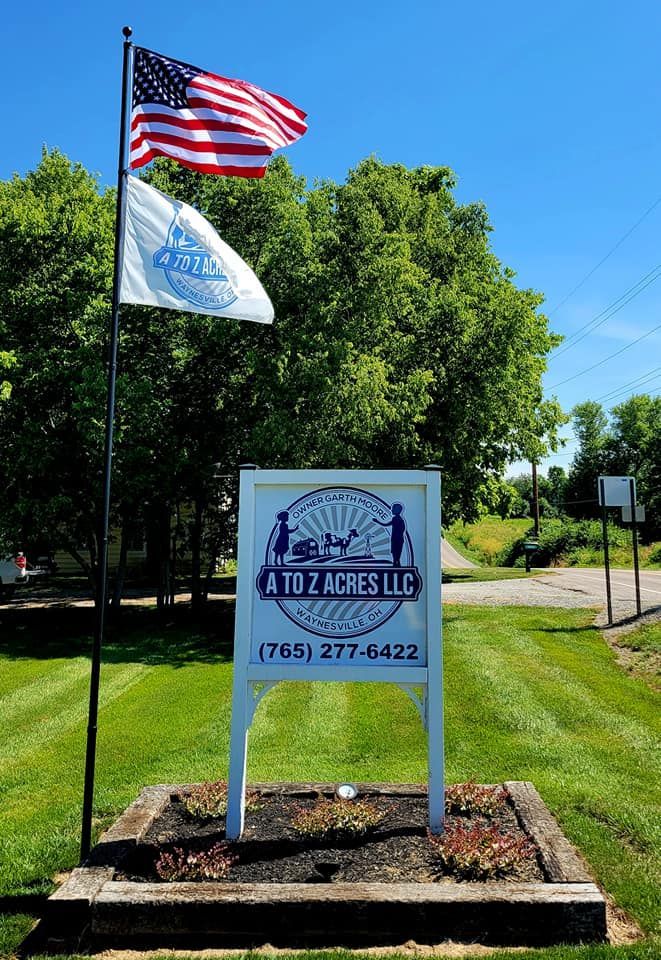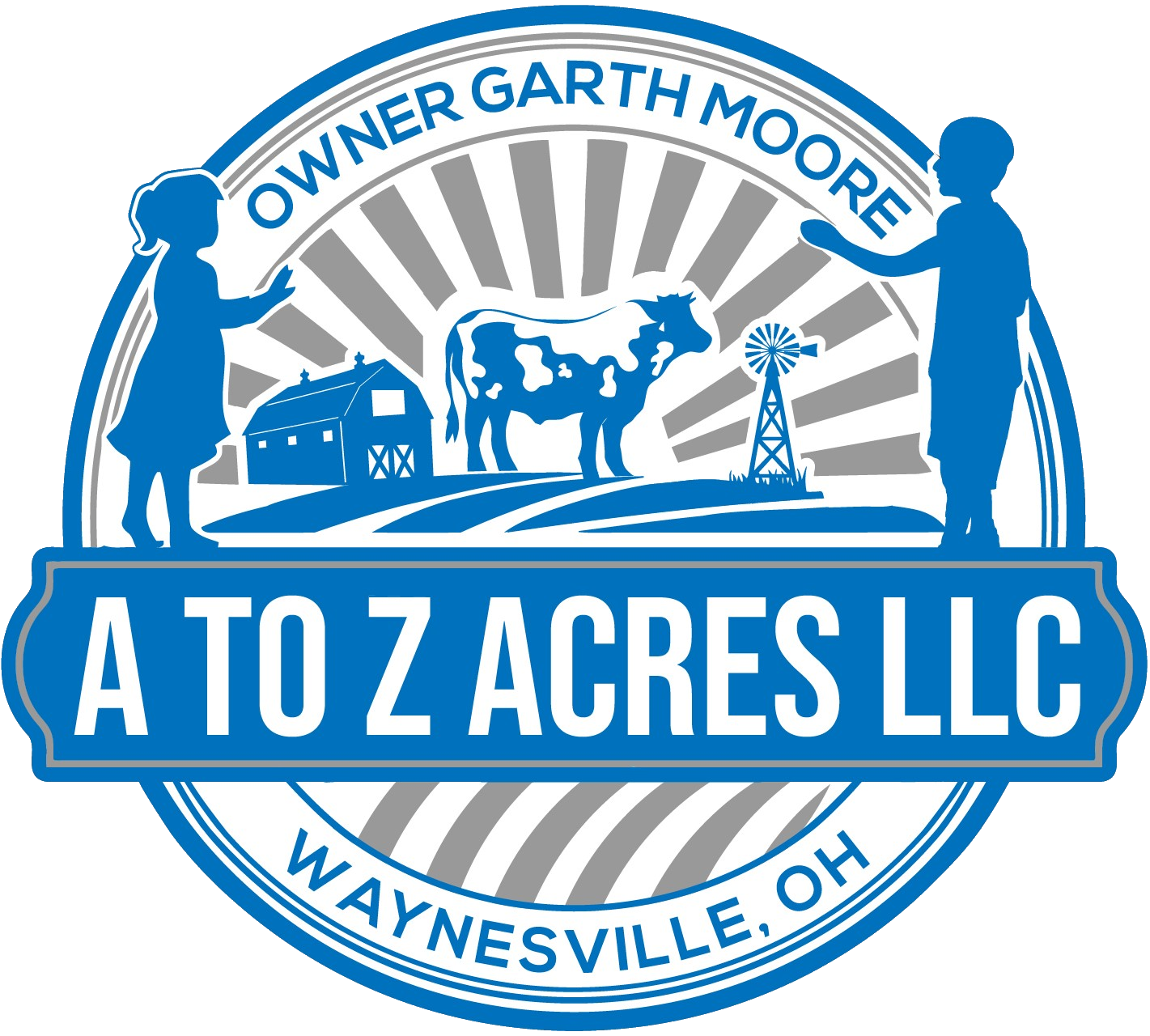Frequently Asked Questions
I’m always glad to help answer any questions or concerns you may have. That being said, there are some questions that I get pretty frequently and thought I’d put some answers here. Thanks in advance and as always if I can help in any way, don’t hesitate to let me know.

Are you Organic?
I get this question more than any other, and it’s a double edge sword. We are not organic certified, and you’ll find the vast majority of farms are not as well. In saying that, I know what people are truly trying to ask and they want to know, “Are you using hormones or steroids on your cattle?”
That answer is “No!”
To be truly/legally certified as Organic your livestock can never receive any type of antibiotic, vaccines, etc. I liken this to giving your family pet it’s shots to help prevent sickness – I feel it’s the proper and responsible thing to do. But because of that, our livestock cannot be advertised as organic.
Prior to the calves even getting to the farm they receive 2 rounds of vaccines that help prevent parasites and other diseases. Likewise they will receive a round of preventative once on the farm that will help eliminate or reduce the amount of insects trying to bite them (horse flies, deer flies, flies, ticks, etc.)
If you’re shopping around and someone advertises they are Organic they should be able to provide legal certification and that includes un-fertilized or sprayed pastures, documentation on where the corn/feed was grown and it was not GMO as well as no vaccinations or medications to keep insects from biting the herd and water sample results to show there was no run-off from a nearby field. All of those things will cause an operation to fall out of the Organic category.
What do you charge?
Everything is based upon what is called the ‘hang weight’ of the animal (i.e. all the usable meat). Every year I review what the cost of feeder calves, straw & hay, feed, beef processing, insurance, equipment and labor costs are and adjust accordingly. I’ll discuss the price per pound hang weight with you prior to any purchases. However a $100 non-refundable deposit is required per each ¼ of beef. (This will be deducted from your bill once paid in full.)
There’s no butcher to pay separate – this also includes processing. My goal was to make things as easy and stress free as possible.
Once you’ve provided your deposit, you’ll be locked in. And ‘your beef’ will be on the Farm for roughly a year growing and maturing. You’ll have a tentative month that it will be processed and you’ll receive call from me once I’ve taken your animal to the butcher.
Traditionally 2-3 weeks from the time I take to the butcher your order will be ready for pick up. I will call you several days in advance so we can schedule a day/time for you to pick up from our Farm. Full payment will need to be made in advance of taking the beef home.
Please note that while we do have commercial freezers on site, we do process several head in a quick succession so picking up timely will be key.
Unfortunately, failure to pick up your beef within 7 days from notification will result in an additional daily fee and/or total loss of the order. This is to ensure dates remain firm and we have enough freezer space to accomodate every customer.
The meat will be vacuum sealed and frozen. Normally to store ¼ beef you’ll need a deep freezer of 7-10 cu. feet.
How much meat would I be getting?
Please keep in mind that these figures are estimates only, and that while they should be fairly close, every calf is different and there will always be some fluctuations.
We only raise Black Angus Beef calves. Traditionally Angus fill out (or reach their ideal butcher weight) between 1,100 – 1,500 lbs. Of that weight 60-65% is what is considered ‘hanging weight’ or the most desirable portions that will be processed into steaks, roasts, burger, etc.
We charge per hanging weight pound in ¼, ½ and whole. So, let’s say you’d like to order a ¼ from us and the total weight was 1,200 lbs.
1,200 (total weight) X 65% (estimate on hanging weight) = 780 lbs. of hanging weight.
780 (hanging weight) / 4 (breaking down into quarters) = 195 lbs. of hanging weight.
Of the 195 lbs. there will be bone, fat, etc. that is removed making the actual total less. (This is where how you want it processed makes a difference.)
***Again, this is a rough estimate as it could be more as a heavier animal, or it produced at a higher hanging weight percentage.***
A breakdown of the different cuts you would receive from a ¼ beef are as follows - again, can’t stress enough as these are estimates – and this is with an assumption of ¾” thick and roast sizes of 3 lbs.:
- Cut - Amount or Avg. LBS.
- Filet Mignon - 3-4 Steaks (increased thickness)
- T-Bone or New York Strip - 7 Steaks
- Sirloin or Sirloin Strip Steak - 4 Steaks
- Ribeye Steak or Rib Roast - 7 Steaks OR 1 Roast
- Arm Roast - 1-2 Roasts
- Cube Steaks - 4-5 Steaks
- Chuck Roast - 4 Roasts
- Rump Roast - 1 Roast
- Neck Roast - 1 Roast
- Hamburger/Ground Beef - 35 LBS. (Any cut of meat can be made into hamburger)
- Short Ribs - 9 Ribs
- Stew Meat - 3 LBS.
- Brisket - 3 LBS.
- Flank Steak - 1 Steak
* Liver, Heart, Tongue and Oxtail are also available but only 1 Customer per Animal can receive)
Is Buying from you really more economical than buying from the grocery?
Our farm is direct to you. There’s no added overhead from multiple ‘middle men’ and I love having visitors on the Farm so you can see exactly where, and how you’re getting your family meal. It’s that transparency that I feel gives us a leg-up over the chain stores.
In many cases you’ll find the going rate for bulk hamburger is very similar to what we charge per pound (and that includes your steaks, roasts, ribs, etc. that are normally a more desired and thus more expensive cut of beef.)
Will your cattle be fully pasture raised?
My cattle will be what’s called ‘full feed’ cattle. The cattle will always have access to pasture but I’m a firm believer in corn-fed beef. The cattle that we’ll be raising will be purchased from a sole farm (far less chances for diseases by purchasing from multiple farms / livestock auctions) and not arrive to our farm until they’ve been weaned from their mother and eating a grain diet.
What will you be feeding your herd?
The cattle will always have access to pasture. In our pasture it’s primarily tall fescue grass, with several varieties of grasses and clover. I’ve also sown in oats as a cover crop to allow the grass to get a good deep root system without the need for a lot of watering.
Their primary source of calories will be from field corn and cattle supplement pellet mix. I buy several tons of corn from a local grain mill throughout the year as well as add supplement pellets that I’ve spoken with a nutritionist on. Our cattle will have full-time access to a 3.5-ton creep feeder. The feed is ground and mixed right on site and provides the right nutrition for a healthy diet.
The hay that the cattle will receive is primarily alfalfa hay. Alfalfa is different than grass hay as it has more nutritional value (both in protein and glucose - i.e. sugar) while still providing the roughage cattle need to help keep their digestive track in proper order.
Many people have asked why our cattle won’t be pasture only raised. Candidly, it’s more of a personal preference. Many studies have shown that pasture cattle take longer to ‘fill out’ and their meat can sometimes be more stringy and tough (not as well marbled.)
Our beef grades out as USDA Prime which is the top 2-5% of all the beef sold within the United States. Only by providing the cattle with a full-feed diet are we able to achieve this level for maximum flavor and tenderness.
How will they be processed?
The vast majority is up to the customer. Prior to processing I’ll go through options with you from what sorts of cuts you like, thickness, etc. People are used to grabbing their beef from the grocery store, so the thoughts/choices can seem overwhelming. I want to make it as easy as possible.
I’ve teamed up with a 4th generation butcher shop that is USDA inspected and viewed as one of, if not the best processors in the state of Ohio – Winner’s Meat Market. Between us your beef will be processed to your specifications. However, all of the beef will be picked up by me and brought back to our farm for you to pick up. There can be several hundred pounds of beef to pick up at a time. I would much prefer to help load it and ensure your happy verses a ‘blind’ pick up at my butcher.
What are your timeframes?
Currently I purchase calves in late fall - normally in October. From there the calves will be on our farm from 10 - 12 months.
If you were a previous Customer, or have asked to be put on our Call/Wait List I begin calling the 1st or 2nd week of January (after the rush of the Holidays has calmed down) to review availability and confirm your portions.
From there I begin calling Customers in June or July to go over their 'cut list.' We'll go over how thick you'd like your steaks, what roasts you'd like, even how you'd like your hamburger packaged.
During that call I'll provide you with your butcher date - the date that I'll be taking your beef to Winner's for processing. Normally our butcher dates run from July - October.
One to two days after your butcher date I'll send you a text letting you know what the hang weight was and what your final total will be.
Your beef will 'dry age' in a refridgerated area for 7-14 days. After that it's processed per your specifications. Once it's been frozen and vaccum sealed I'll send you another text, normally two to three days in advance to let you know when your order will be boxed and ready for pick up here at our farm.
I walk you through every step of the way and ensure you're comfortable and happy with everything!
"A to Z Acres is amazing! Garth goes above and beyond for his customers, is courteous, respectful and has great communication. The farm is gorgeous and well run. The cows are healthy and cared for. And best of all - the beef is phenomenal!!"
Sarah D.
